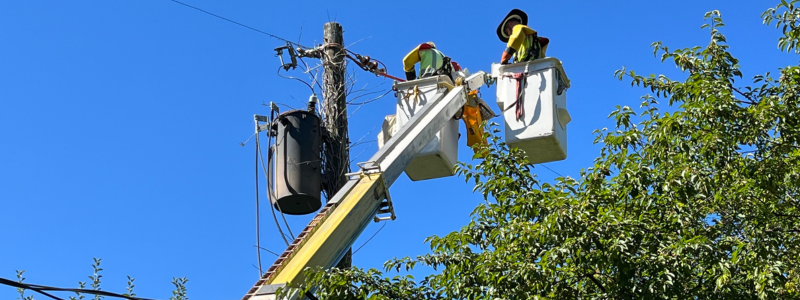The IQGeo team recently attended the DistribuTECH conference in Orlando, Florida and the TechAdvantage Expo in San Antonio, Texas. With representatives from large and small utilities attending the two events, it was a fantastic opportunity to share our Adaptive Grid solution and discuss the value of an integrated mobile work execution strategy. It’s an exciting time to be part of this ecosystem as utilities look to a net-zero carbon future with distributed energy generation, renewables, battery storage, EV charging, and the latest Artificial Intelligence (AI) and Machine Learning (ML) technology.
While once-in-a-lifetime grid modernization is exciting, it’s also extremely challenging. In speaking with utility professionals, consultants, and vendors, we asked the same question: “What’s the biggest challenge facing the industry today?”. Their answers fell into two main camps focused around the exponentially growing complexity of the physical electric grid and the competition for a shrinking pool of talent. At first it may seem like these two issues are completely independent of each other, but with further discussion, it became clear that they are increasingly interdependent and make the grid modernization task at hand even more challenging.
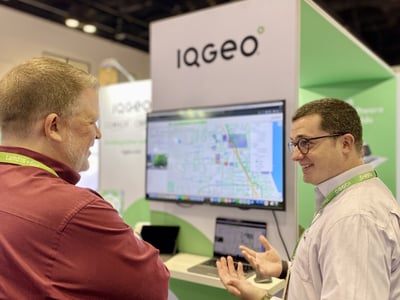
Electric grid complexity
It may seem obvious to say that the grid architecture essential to achieve net-zero targets is complex, but the size and scope of the physical network assets and the associated management technology is truly daunting. Electric grids that have operated happily for 75 or 100 years with a straight forward transmission and distribution network structure must be redesigned and upgraded to support a mixture of energy sources and storage resources with rapidly increasing electricity demand. All this must be done while keeping the lights on. On top of this, promising new AI and ML software is adding even greater pressure to implement new technologies.
Talent gap in the utility industry
An aging workforce, increased demand for skilled engineers, and fewer young people entering the industry all combine to create a serious talent gap for many utilities. Despite the exciting technical challenge of grid-modernization and the important social contribution of creating a net-zero economy, it remains difficult to attract new talent.
A difficult combination
When you combine the realities of increasing grid complexity with the worrisome talent gap, it can create what seems like an insurmountable dilemma. The technology that is essential for our future electric grids demands a new generation of skilled and enthusiastic engineers. Without the talent, it’s difficult to imagine deploying complex grid solutions on a scale and at a pace never before achieved.
Addressing the dilemma from the field
There is certainly no quick fix to the grid complexity and talent dilemma. These two issues feed off one another and will require some long-term strategic changes. But given the importance of grid modernization, it’s vital to press forward with solutions that address immediate problems. In working with electric grid operators across North America, the IQGeo team has developed a proven approach that is helping operators meet their modernization goals while mitigating the talent gap.
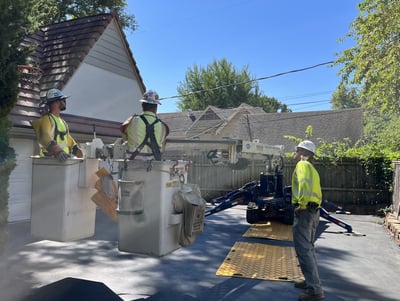
With such a big challenge facing the industry, knowing where to begin can make the difference between success and failure. Working closely with our customers, our team has found that rethinking field mobility is a powerful and effective place to begin. Legacy GIS software was never built for today’s more complex grid requirements, as it relies on paper maps and disconnected manual processes. This traditional field approach is simply not fit for today’s scale and purpose, so it makes sense to invest in this area early in the grid modernization journey.
Deploying modern mobile technology like our Network Manager Electric software gives your team a powerful tool to visualize, construct and capture the increasingly complex grid topology. Its easy-to-use interface empowers your field teams to do more with less while also delivering engaging and exciting software to attract and retain the next generation of field engineers.
Electric utility field mobility use cases
Technology is of little use if it’s not solving specific and measurable problems, and while field mobility software can be applied to different planned and unplanned work execution tasks, there are four key areas that our electric utility customers have found most valuable for their businesses.
- GIS mobility for situational awareness
- Field design and staking
- Asset inspections
- Outage mobility
1. GIS mobility for situational awareness and as-builts
Today, electric utility operators are using the IQGeo mobility software to support their existing back-office GIS by giving their field teams direct access to critically important grid assets on tablets and phones through an easy-to-use application. Whether online or offline, we empower field teams with the physical and analytical information they need to make on-the-spot decisions and efficiently handle planned and unplanned situations. With minimal training, field crews can also dynamically capture grid as-built details into their GIS, helping to constantly improve network data quality for future operational tasks.
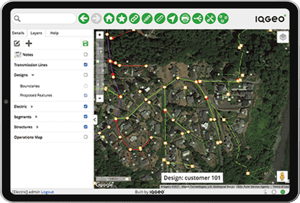
2. Field design and staking
Giving designers the mobile tools they need to perform field design and staking tasks has proven to be a major optimization gain for utilities. Decentralizing the design task reduces the pressure on engineering resources and results in a more streamlined process. Our software allows engineers to quickly geolocate existing assets, create and update designs, and capture all their work digitally for others to review and validate. And all this can be done with well-defined work execution tasks to ensure corporate standards and safety regulations are maintained.
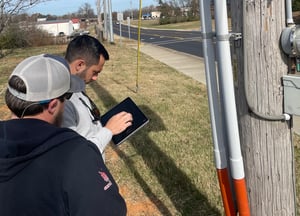
3. Asset inspection
The ongoing inspection of electric grid assets can also benefit from a modern field mobility solution by providing a structured set of inspection workflows that field crews must perform to capture and document the inspection process. For example, utilities often use our software's geospatial capabilities to geolocate assets and link them to tasks to validate that inspections are properly performed at a given location. And the progress of the inspection process can be tracked and monitored by office-based staff. This digital process is hugely powerful because it can dramatically streamline the entire inspection and reporting process.
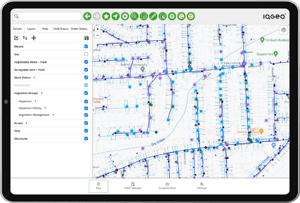
4. Outage mobility
The combination of complex grid architectures, frequent severe climatic events, and a greater dependency on electric resources means that an effective outage management strategy is more important than ever. Using traditional processes to manage a severe outage scenario is highly inefficient, introduces delay, and increases risk. Some of the world's largest electric utilities use the IQGeo software as a geospatial dashboard for their disaster response operations. Their field crews use mobile devices to monitor the state of the network, perform outage mitigation, and feedback critical information about their repairs. This allows “war room” teams to prioritize response, monitor field activities, and mitigate risk for their customers and field workforce.
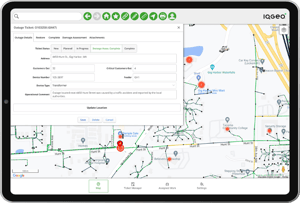
A mobile step in the transformation journey for electric utilities
The dilemma of increasingly complex grid technology combined with a shrinking workforce is a real and very difficult challenge for the utility industry, but building the net-zero electricity grid must be done for the sake of future generations. This means that we must find ways to take the next step in our journey using the available resources and technology. Given the critical role that field crews play across the lifecycle of the grid - from build to maintenance to disaster response - mobility is an ideal place to begin the digital transformation journey.
Going beyond GIS with IQGeo
Working together with utility operators around the world, IQGeo has developed the industry’s leading field mobility technology, and we’ve seen first-hand how it is being applied to take on the grid complexity and workforce dilemma. Together with our customers, we’re delivering a mobility strategy that empowers field teams with the awareness and insights they need to do their jobs, and capture and visualize network complexity to inspire the next generation of field engineers.

IQGeo turns the challenges of grid modernization into opportunities through a single, enterprise-wide system, enabling easy digital work execution across the network lifecycle.
Together we are making a difference by “Building Better Networks”.

